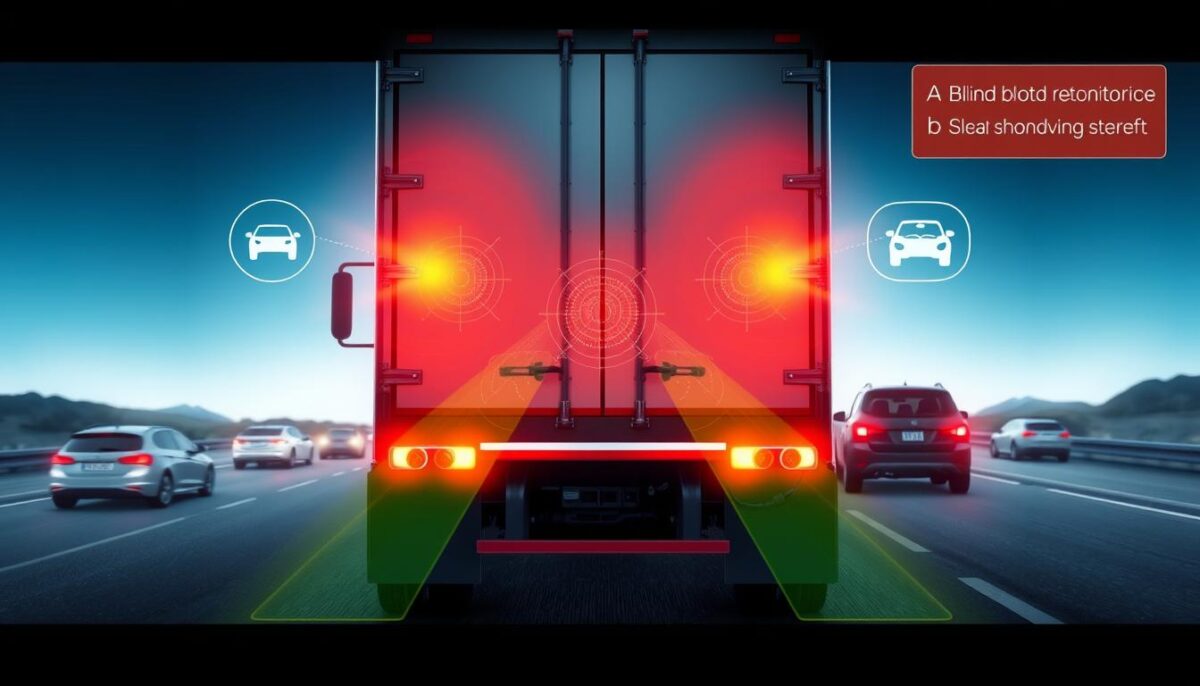In the ever-evolving realm of truck safety technology, truck tail light blind spot monitor systems have emerged as a crucial asset for drivers. These innovative systems utilize sensors integrated within the tail lights of trucks to enhance the awareness of blind spots, ultimately minimizing potential hazards. As the demand for effective blind spot detection for trucks continues to rise, these tail light monitoring systems have become an essential component of modern trucking safety protocols. By providing increased visibility into adjacent lanes, these systems significantly contribute to accident prevention, ensuring safer journeys for both drivers and other road users.
Understanding Blind Spot Monitoring Technology
Blind spot monitoring technology represents a critical advancement in truck safety systems. By employing advanced blind spot sensor technology, these systems significantly enhance truck driver safety and facilitate accident prevention. Understanding how blind spot monitors function provides insight into their importance on the road.
How Blind Spot Monitors Work
Blind spot monitors rely on strategically placed sensors that detect objects hidden from the driver’s view. When another vehicle enters a blind spot, the system activates and alerts the driver through visual signals in mirrors or auditory warnings. This proactive alerting mechanism allows the truck driver to remain aware of surrounding traffic, mitigating risks significantly.
Importance of Blind Spot Detection for Trucks
The importance of blind spot detection cannot be overstated, especially in the context of large trucks. These vehicles have considerable blind spots due to their size. As a result, they are more susceptible to accidents caused by unseen vehicles during maneuvers like lane changes or turns. Studies have shown that incorporating blind spot monitoring systems has led to a reduction in collision rates, underscoring their critical role in enhancing truck driver safety. With the increasing number of vehicles on the road, including motorcycles and smaller cars, the need for effective accident prevention measures is ever more pressing.

| Attribute | Blind Spot Monitoring System | Traditional Method |
|---|---|---|
| Detection Range | Wide, covering large blind spots | Limited, requiring manual checks |
| Alert Mechanism | Visual and auditory alerts | Visual checks only |
| Driver Awareness | Increased, due to technology support | Dependent on driver vigilance |
| Collision Risk | Reduced significantly | Generally higher |
Truck Tail Light Blind Spot Monitor Systems
Truck tail light blind spot monitor systems represent a significant advancement in vehicle safety technology. These systems enhance driver awareness through innovative features designed to minimize the risks associated with blind spots. Understanding the features of tail light monitors and their benefits can greatly improve the safety of truck drivers on the road.
Features of Tail Light Blind Spot Monitors
These advanced systems offer a variety of key features that enhance their functionality:
- Multiple sensor configurations provide 360-degree coverage, ensuring no blind spot goes unnoticed.
- Adaptive algorithms adjust to varying driving conditions, optimizing performance in different scenarios.
- Integration with other advanced truck safety features, such as lane departure warnings, increases overall awareness.
- Real-time feedback keeps drivers informed of their surroundings, enhancing reaction times and decision-making.
- Monitor multiple blind spots simultaneously, ensuring comprehensive coverage while driving.
Benefits for Truck Drivers
The benefits of blind spot monitors are substantial for truck drivers, enhancing safety and comfort:
- Significantly reduce the likelihood of accidents by alerting drivers to potential hazards in blind spots.
- Increase awareness for safer lane changes and merging, leading to smoother navigation on busy roads.
- Enhance driver confidence, resulting in more efficient driving behavior and less stress.
- Lower insurance premiums due to reduced accident risks, providing financial savings for drivers and companies.
| Feature | Benefit |
|---|---|
| 360-Degree Coverage | Eliminates blind spots, enhancing overall safety. |
| Adaptive Algorithms | Optimizes performance under varying conditions, ensuring reliable operation. |
| Real-Time Feedback | Improves awareness and response times, crucial for avoiding accidents. |
| Integration with Safety Systems | Provides a comprehensive safety network, increasing protection. |
| Simultaneous Monitoring | Ensures awareness of multiple hazards at once, minimizing risk. |
Installation and Maintenance of Blind Spot Monitoring Systems
The installation of blind spot monitors is typically a straightforward process, yet harnessing the expertise of a professional can make a significant difference in functionality. Most systems can seamlessly integrate into the existing vehicle framework, minimizing the need for major alterations to the truck. Depending on the specific model and make, the setup may include mounting sensors, connecting wiring, and calibrating the system to ensure it aligns perfectly with the truck’s dimensions.
After installation, maintaining these monitoring systems is essential for optimal performance. Regularly inspecting sensors for cleanliness is key, as dirt or debris can impair functionality. Implementing maintenance tips for monitoring systems can prevent minor issues from escalating into significant problems. Additionally, addressing any alerts or malfunctions immediately will contribute to the ongoing effectiveness of the technology.
Following the manufacturer’s guidelines is critical throughout the lifespan of the monitoring system. This truck safety technology upkeep not only assures reliability but also offers peace of mind to drivers navigating busy roads. Ultimately, by prioritizing both installation and maintenance, truck owners can enjoy the enhanced safety benefits that blind spot monitoring systems provide.




